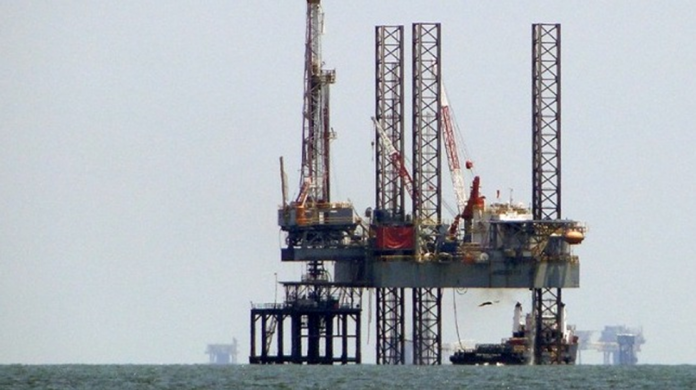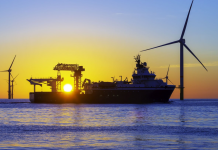
Water is crucial for human survival. It’s also critical for the health of the planet. Seventy percent of the world’s surface is covered by water, of which roughly 97 percent is in the oceans and seas. While representing over twice the planet’s land mass, oceans are not where people live. Therefore, for many people, their ocean experience comes from living on a coastline, visiting a beach, taking a cruise or flying between continents.
As a source of food and energy as well as low-cost transportation, our oceans and seas are bountiful and important, and likely to become more important for our future.
Few people appreciate the role our oceans and seas play – with their constantly circulating currents – in regulating the planet’s weather. These ocean conveyor belts move warm water from the equator to the poles and cold water from the poles to the equator. This constant transfer helps counteract the uneven distribution of solar radiation reaching the Earth’s surface, regulating the climate. Oceans also perform a valuable service in capturing and holding carbon emissions, which helps regulate the volume of carbon in our atmosphere and tempers the planet’s heat.
COP27
Likely unbeknownst to the 40,000-plus delegates, political leaders, bureaucrats and media who assembled for the U.N.’s 27th Conference of the Parties at Sharm el-Sheikh on the coast of the Sinai Peninsula of Egypt, the fate of our oceans and seas was up for debate.
Oceans are home to all forms of energy. As such, decisions by COP27 delegates about which energy sources are to be favored will impact the health and growth of sectors within the global energy business. The outcome of COP27 was to embrace a rapid phasing down of fossil fuel use while expanding renewable energy sources. Oceans will be impacted by both trends.
We doubt people attending COP27 considered the role of fossil fuels in the history of Sharm el-Shiekh. Located on the coast of the Red Sea, overlooking the Straits of Tiran at the mouth of the Gulf of Aqaba, this former fishing village has evolved into a major tourist resort, commercial port and base for the Egyptian Navy.
Throughout most of history, the region was uninhabitable due to its prohibitive climate. The little fishing village’s importance came from its strategic command of the narrow entrance to the Gulf of Aqaba, whose coastline is shared by Egypt, Israel, Jordan and Saudi Arabia. Following Israel’s War of Independence in 1948-1949, Egypt installed guns overseeing the straits to limit shipping from reaching Elat, Israel’s only port on the Gulf of Aqaba.
Sharm el-Sheikh’s strategic importance was confirmed when Israel captured it during the Sinai Campaign of 1956 – part of the Suez Crisis – but returned it to Egypt in 1957. Between 1957 and 1967, a U.N. peacekeeping force guarded the guns. Egypt’s withdrawal of the U.N. force and closure of the straits in May 1967 helped precipitate the Six-Day War, during which Sharm el-Sheikh was recaptured by Israeli forces. It was returned to Egypt in 1982.
During the 1960s, when Israel controlled the village, it commenced the development of tourist attractions, especially diving on nearby coral reefs. The existence of air conditioning helped.
“City of Peace”
Sharm el-Sheikh is known as the “City of Peace” because it hosted numerous peace negotiations over the years. The title is apropos given COP27’s agenda being expanded to include a discussion of reparations by developed countries for developing economies harmed by carbon emissions.
At COP26 in Glasgow, little progress in slowing carbon emissions was achieved. The major achievement was getting attendees to agree to the word “pause” rather than “end” when discussing coal’s use.
COP27’s dynamics were different from prior conferences. The focus on climate change received similar lip service, but warnings of the slow pace in limiting carbon emissions precipitating a world climate disaster were stark and alarming. Security of energy supply, however, had become a greater concern given the unfolding global energy crisis. Energy shortages have driven fuel and electricity costs sky-high. With energy inflation soaring, developing countries boldly asked: Where’s the money you promised for climate relief?
The warmth of Sharm el-Shiekh did little to alleviate concerns about the potential of a humanitarian crisis this winter. Governments worry about ensuring adequate energy for their citizens at reasonable costs. Because these conditions have not been met, energy poverty is soaring worldwide. For the first time in years, the number of people lacking access to electricity has increased, a serious step backward for humanity.
Food & Energy Security
Oceans and seas offer an opportunity for all countries, not just those with coastlines, to improve their energy and food security by tapping the available resources.
The oldest effort in tapping ocean resources is fishing. In 2020, 178 million metric tons of aquatic animals (fish and shellfish) and 36 million metric tons of algae were harvested from the planet’s waters. That translated into about 2.2 pounds per capita for the world’s nearly eight billion people, a consumption rate that has been sustained since at least 2014. Seven countries – China, Indonesia, Peru, India, Russia, the U.S. and Vietnam – accounted for 49 percent of the global seafood harvest with the most harvested fish being Peruvian anchoveta, Alaskan pollack and skipjack tuna.
According to the U.N., about 7.5 percent of the world’s population depends on fisheries and aquaculture for their livelihood. Amazingly, a quarter of the workers directly involved in the aquaculture industry are women, and that share grows to half the workers when considering the entire aquatic value chain.
Recent years have seen the rapid growth of offshore energy output. Roughly 30 percent of the world’s 100 million barrels a day of oil output comes from offshore fields with production spread across the world from Africa to North America and the Arctic to Brazil. The number of countries with offshore production continues to grow, as the oceans are the least explored of the world’s regions and offer potentially new and large basins with high well-production rates.
A much smaller share of the world’s natural gas supply comes from offshore fields, but the volume of gas transported across oceans is growing rapidly. Large natural gas deposits are in areas, including offshore, remote from consumers, which necessitates liquefying, shipping and re-gasifying the fuel for use in heating and generating electricity, as well as providing petrochemical feedstocks for consumers.
One of the most important new oil fields discovered lies offshore the South American country of Guyana. The development of this discovery is revolutionizing a poor country, offering a better future for its 800,000 inhabitants.
According to the International Energy Agency’s 2018 Offshore Energy Outlook report, both global oil production and offshore output are projected to increase through 2050 although the offshore share will remain steady at 29 percent. The mix of deepwater versus shallow water production will change with the former growing sixfold while the latter declines by nearly 20 percent. Offshore natural gas’s share of world output will grow by nearly 30 percent from 2000 to 2050 with shallow water production more than doubling and deepwater’s share up 25 times.
Offshore Wind
While offshore oil and gas growth is impressive, the oceans’ major energy growth will come from developing wind farms, both fixed-bottom and floating. Almost every country with a coastline is targeting installing wind turbines to generate clean power. From Europe to America to Vietnam and China, plans are being developed and implemented for new and expanded wind farms. A recent study projects 30,000 wind turbines being installed offshore between 2022 and 2035 with optimists suggesting even more.
Although offshore wind is expensive electricity, expectations are its cost will fall as massive wind farms with larger wind turbines reduce per-megawatt power costs. An expanded offshore wind infrastructure is key to the projected cost reductions although developing the supply chains for critical minerals used in turbines and batteries remains a serious challenge.
Large offshore wind farms are also seen as a source of cheap power for electrolyzers to produce low-cost green hydrogen to fuel energy sectors possessing unique decarbonization challenges such as heavy industry, long-haul freight, shipping and aviation. An experiment has also been conducted for wind-generated electricity to power offshore oil and gas reservoir pressurization programs to boost output. This experiment has proven controversial as pragmatists see it reducing emissions from aging petroleum assets while purists view it as a gateway to “dirtying” clean wind energy.
Because the world is recognizing that fossil fuels will play a role in the global energy market for decades to come, we side with the pragmatists on the value of offshore wind in sustaining offshore oil and gas output.
Bountiful Resources
As offshore renewable energy grows as a share of the world’s power market, more people will become involved with and dependent on our oceans. Sustaining the food output of oceans will take on greater importance with a growing world population, just as tapping its underwater petroleum and mineral assets will become more important. We should be thankful for the contribution of the oceans’ bountiful resources in improving humanity’s future.
Source – THE MARITIME EXECUTIVE by G. ALLEN BROOKS




